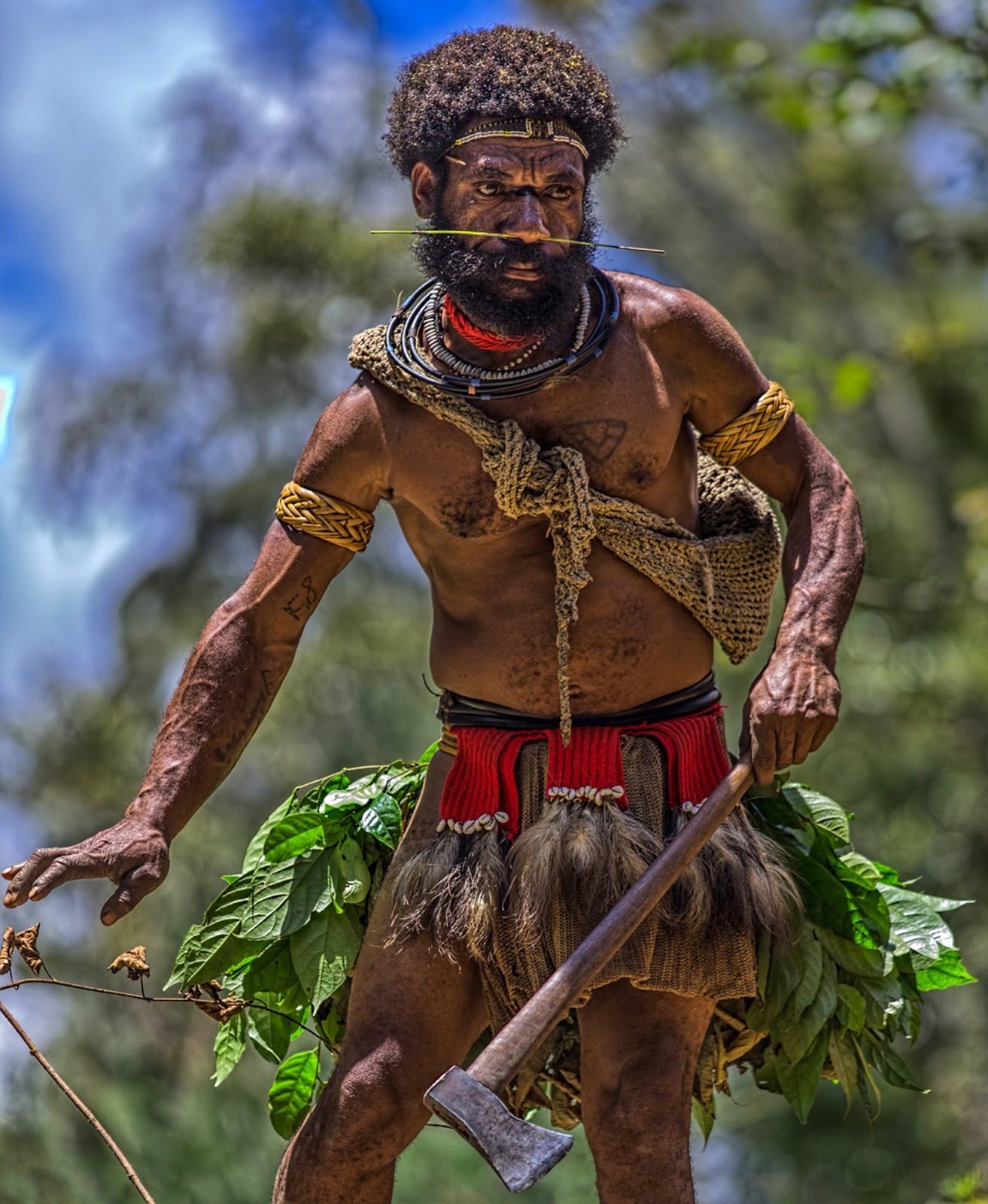


 Travelling in PNG can be challenging. With almost no tourism infrastructure and limited information available in books and on websites, it can feel like you’re stepping into the great unknown. But this is exactly why travellers find this country so compelling. Nothing is contrived for tourists and every experience is authentic - even the main island of Bougainville is a largely DIY travel experience. The striking natural beauty and myriad complex cultures offer some riveting and truly life-affirming experiences. The island of New Guinea, of which Papua New Guinea is the eastern part, is only one-ninth as big as Australia, yet it has just as many mammal species, and more kinds of birds and frogs. PNG is Australia’s biological mirror-world. Both places share a common history going back tens of millions of years, but Australia is flat and has dried out, while PNG is wet and has become mountainous. As a result, Australian kangaroos bound across the plains, while in PNG they climb in the rainforest canopy. For a glimpse into PNG's fascinating tribal cultures, the Highlands is where you should head (the town of Tari is a good place to see traditional Huli wigmen), while the Central, Oro & Milne Bay Provinces are home to gorgeous reefs and historic wartime sites - including the country's foremost attraction, the Kokoda Track. Also part of these eastern provinces, and about as far off the beaten track as you can get, the D’Entrecasteaux Islands are like the land that time forgot, mountainous, jungly and totally undeveloped. The gritty capital Port Moresby, on the other hand, is big and sprawling and even a bit intimidating until you get under its skin and see past the bad press.
Travelling in PNG can be challenging. With almost no tourism infrastructure and limited information available in books and on websites, it can feel like you’re stepping into the great unknown. But this is exactly why travellers find this country so compelling. Nothing is contrived for tourists and every experience is authentic - even the main island of Bougainville is a largely DIY travel experience. The striking natural beauty and myriad complex cultures offer some riveting and truly life-affirming experiences. The island of New Guinea, of which Papua New Guinea is the eastern part, is only one-ninth as big as Australia, yet it has just as many mammal species, and more kinds of birds and frogs. PNG is Australia’s biological mirror-world. Both places share a common history going back tens of millions of years, but Australia is flat and has dried out, while PNG is wet and has become mountainous. As a result, Australian kangaroos bound across the plains, while in PNG they climb in the rainforest canopy. For a glimpse into PNG's fascinating tribal cultures, the Highlands is where you should head (the town of Tari is a good place to see traditional Huli wigmen), while the Central, Oro & Milne Bay Provinces are home to gorgeous reefs and historic wartime sites - including the country's foremost attraction, the Kokoda Track. Also part of these eastern provinces, and about as far off the beaten track as you can get, the D’Entrecasteaux Islands are like the land that time forgot, mountainous, jungly and totally undeveloped. The gritty capital Port Moresby, on the other hand, is big and sprawling and even a bit intimidating until you get under its skin and see past the bad press.
PNG is one of earth’s megadiverse regions, and it owes much of its diversity to its topography. The mountainous terrain has spawned diversity in two ways: isolated mountain ranges are often home to unique fauna and flora found nowhere else, while within any one mountain range you will find different species as you go higher. In the lowlands are jungles whose trees are not that different from those of Southeast Asia. Yet the animals are often startlingly different – cassowaries instead of tapirs, and marsupial cuscus instead of monkeys.
The greatest diversity of animal life occurs at around 1500m above sea level. The ancestors of many of the marsupials found in these forests were derived from Australia some five million years ago. As Australia dried out they vanished from that continent, but they continued to thrive and evolve in New Guinea, producing a highly distinctive fauna. Birds of paradise and bowerbirds also abound there, and the forest has many trees typical of the forests of ancient Gondwana. As you go higher the forests get mossier and the air colder. By the time you have reached 3000m above sea level the forests are stunted and wreathed in epiphytes. It’s a formation known as elfin woodland, and in it one finds many bright honeyeaters, native rodents and some unique relics of prehistory, such as the giant long-beaked echidna. Above the elfin woodland the trees drop out, and a wonderland of alpine grassland and herbfield dominates, where wallabies and tiny birds, like the alpine robin, can often be seen. It is a place where snow can fall and where early morning ice coats the puddles.




























Комментариев нет:
Отправить комментарий